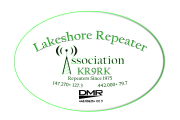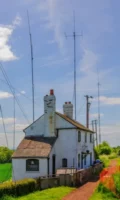In the quiet town of Springdale, Wisconsin, where technology often played second fiddle to tradition, lived a young man named Alex. Growing up surrounded by smartphones and instant messaging, he was drawn to the allure of technology. However, it was not the flashy apps or the latest gadgets that captured his imagination; it was the subtle whisper of radio waves, the hum of electronics, and the promise of connecting with the world through ham radio.
One day, as Alex explored the depths of the internet, he stumbled upon a website dedicated to ham radio. The stories of building antennas, crafting one’s communication system, and diving into the world of electronics ignited a spark within him. Unbeknownst to him, this discovery would reshape his understanding of communication.
Eager to delve into this realm, Alex started his journey by acquiring his ham radio license. The local amateur radio club and their repeaters became his second home, where seasoned enthusiasts shared tales of crafting antennas that could reach far-off lands, experimenting with electronic circuits, and embracing the exciting world of digital modes like DMR, Allstar, and FT-8.
Alex’s weekends were soon consumed by the construction of his antenna farm. Armed with soldering irons, coaxial cables, and a passion for experimentation, he transformed his backyard into a haven of towering masts and intricate wire arrays. As he erected each antenna, he marveled at the science behind their designs and the art of tuning them to perfection, enabling him to communicate with fellow hams across the globe using digital modes that danced in the realm of ones and zeros.
But Alex’s journey didn’t stop at digital modes. Intrigued by the potential of satellite communication, he set his sights higher. Literally. With a small tracking system and a portable transceiver, he linked up with satellites and the International Space Station orbiting high above. It was a dance of signals between Earth and space, a connection that transcended the limitations of traditional communication. Alex found himself conversing with operators in different time zones, sharing stories that echoed through the silent expanse of space.
In his garage-turned-workshop, Alex and his fellow enthusiasts explored the fascinating world of SSTV (Slow Scan Television). Armed with software-defined radios and a keen eye for visual communication, they sent images across the airwaves, capturing and sharing moments that went beyond the confines of spoken words.
As the antennas reached for the sky and the satellites blinked overhead, Alex realized that ham radio was not just about communication—it was a canvas for creativity and exploration. The blend of traditional analog communication and cutting-edge digital modes allowed him to send messages with the efficiency of digital computers, share images via SSTV, and establish connections that spanned both distance and technology.
As Alex continued to immerse himself in the captivating world of ham radio, he ventured into the realm of High-Frequency (HF) communications. Setting up a dedicated HF station along with his newly upgraded license, he eagerly explored the nuances of long-distance propagation. Guided by the mysteries of ionospheric conditions, he learned to navigate the changing atmosphere that could enhance or hinder radio signals. Studying propagation charts and monitoring solar activity became second nature to him, as he sought to master the art of predicting the best times and frequencies for optimal communication. With each successful contact made over vast distances, Alex marveled at the unpredictability of the ionosphere and the skill required to harness its ever-changing dynamics for reliable HF communication. It was through these experiences that he gained a deeper appreciation for the intricate dance between radio waves, the sun, and the Earth’s atmosphere, further enriching his journey into the diverse facets of amateur radio.
He learned to set up temporary stations in remote locations using battery power. He was amazed how far he could reach on only ten watts of power and a wire hanging from a nearby tree. He had fun operating from different locations using Parks On The Air (POTA), Islands On the Air (IOTA), and Summits On The Air (SOTA). All the while, he was proving the worth of ham radio’s emergency capabilities in the event of disasters that sometimes take out or overload more conventional communications pathways.
Over the course of many years, Alex continued his relentless experimentation with various modes of communication. From the rhythmic pulses of Radio Teletype (RTTY) to the precise and deliberate Morse code of Continuous Wave (CW), and the clear voice transmissions of Single Sideband (SSB), he explored the rich tapestry of possibilities within the ham radio spectrum. Intrigued by the challenge of bouncing signals off the moon, he delved into the fascinating world of moon bounce, pushing the boundaries of what seemed possible. Meteor scatter, with its brief yet intense bursts of communication, became another avenue for exploration. With each new mode, Alex discovered the diverse and exciting horizons that ham radio offered, proving that the journey was not just a one-time revelation but a continuous, ever-evolving adventure into the realms of the radio spectrum.
In Springdale, where the hills echoed with the tranquility of nature, Alex found his sanctuary in the world of ham radio. It was a journey that led him from the basics of antenna construction to the outer reaches of space, all while embracing the magic of digital communication and the complexities of HF propagation. As he stood amidst his antennas, gazing at the horizon and the satellites above, Alex knew that he had discovered a timeless art—one that seamlessly blended the analog past with the digital future, echoing the beauty of ham radio’s enduring legacy.
–Fred Glenn
K9SO

